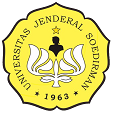Synthesis Glycine-Modulated Metal Organic Framework Cr-PTC-Gly for Synergetic Methylene Blue Adsorption and Photodegradation under Visible Light Irradiation
Abstract
The glycine-modulated metal-organic framework (MOF) Cr-PTC-Gly was successfully synthesized for methylene blue elimination application. The Fourier Transform Infra-Red (FTIR) characterization showed the stretching vibration N-H at 2034 cm-1. The bands at 1506 and 1406 cm-1 are asymmetric and symmetric stretching vibrations (-COO) bound to Cr3+ ions and 3118 cm-1 of the hydroxyl (OH) functional group of H2O bound to the Cr3+ ion. The band gap energy of MOF Cr- PTC-Gly is 1.9 eV. The XRD analysis showed that MOF Cr-PTC-Gly has good crystallinity with a crystal size of 17.79 nm. MOF Cr-PTC-Gly with 50% glycine gave the most optimum elimination activity with an elimination capacity of 87.95 mg/gram via adsorption and photocatalytic degradation. The adsorption mechanisms were carried out via electrostatic interaction, hydrogen bonding, and π-π interaction. In contrast, photocatalytic degradation was carried out by forming free radical species with hydroxyl radicals (•OH) as a dominant species that contributed to the methylene blue degradation.
Authors agree with the statements below:
- Authors automatically transfer the copyright to the MOLEKUL journal and grant the journal right of first publication with the work simultaneously licensed under a Creative Commons Attribution 4.0 International License (CC BY 4.0).
- Authors are able to enter into separate permission for the non-exclusive distribution of the journal's published version of the work (e.g., post it to an institutional repository or publish it in a book), with an acknowledgment of its initial publication in this journal.













